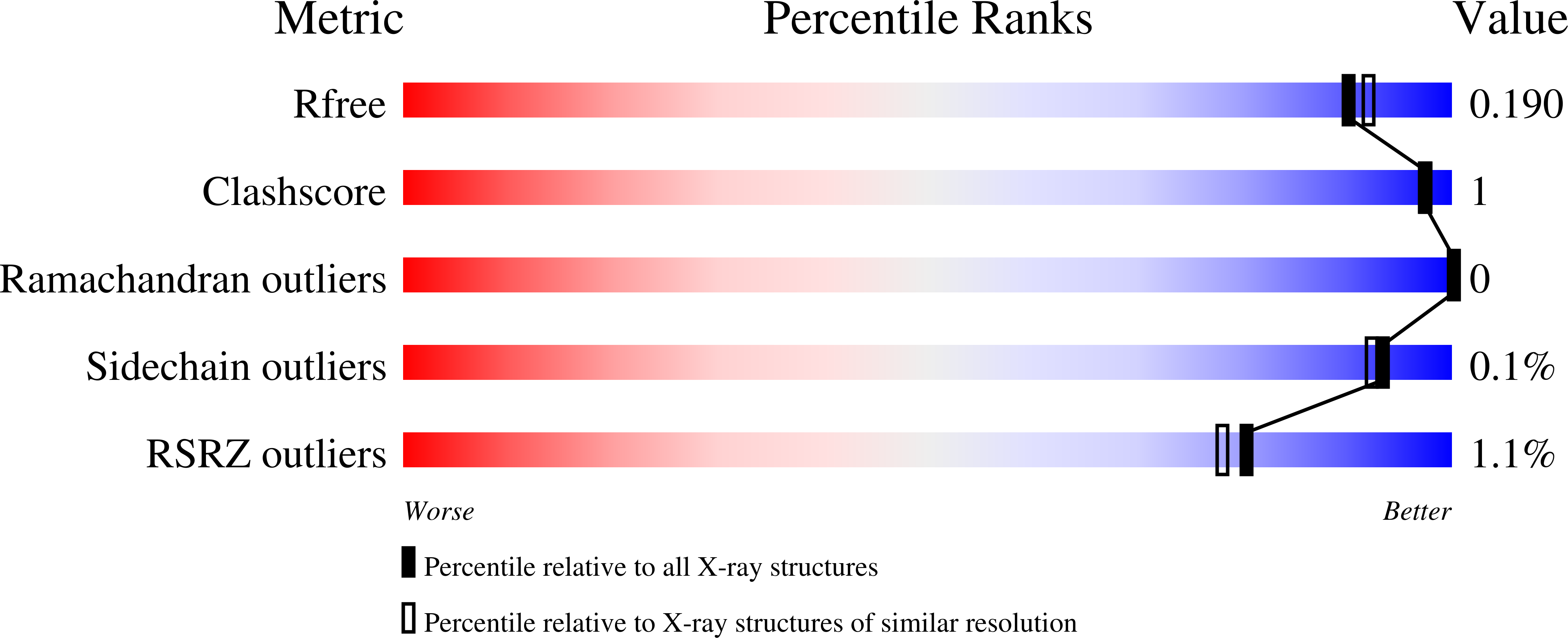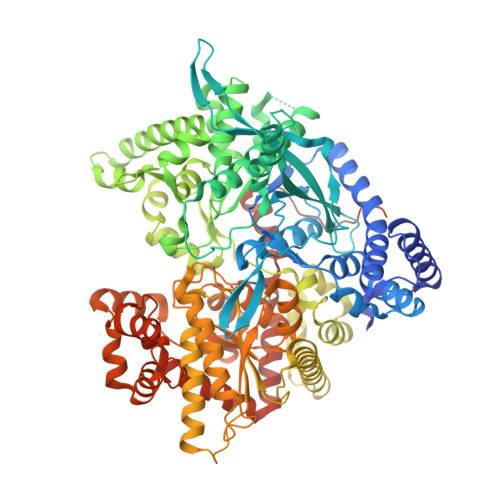A glucose-based molecular rotor inhibitor of glycogen phosphorylase as a probe of cellular enzymatic function.
Minadakis, M.P., Mavreas, K.F., Neofytos, D.D., Paschou, M., Kogkaki, A., Athanasiou, V., Mamais, M., Veclani, D., Iatrou, H., Venturini, A., Chrysina, E.D., Papazafiri, P., Gimisis, T.(2022) Org Biomol Chem 20: 2407-2423
- PubMed: 35119451
- DOI: https://doi.org/10.1039/d1ob02211c
- Primary Citation of Related Structures:
7Q5I - PubMed Abstract:
Molecular rotors belong to a family of fluorescent compounds characterized as molecular switches, where a fluorescence on/off signal signifies a change in the molecule's microenvironment. Herein, the successful synthesis and detailed study of ( E )-2-cyano-3-( p -(dimethylamino)phenyl)- N -(β-D-glucopyranosyl)acrylamide (RotA), is reported. RotA was found to be a strong inhibitor of rabbit muscle glycogen phosphorylase (RMGP b ), that binds at the catalytic site of the enzyme. RotA's interactions with the residues lining the catalytic site of RMGP b were determined by X-ray crystallography. Spectroscopic studies coupled with theoretical calculations proved that RotA is a molecular rotor. When bound in the catalytic channel of RMGP b , it behaved as a light switch, generating a strong fluorescence signal, allowing utilization of RotA as a probe that locates glycogen phosphorylase (GP). RotA, mono-, di- and per-acetylated derivatives, as well as nanoparticles with RotA encapsulated in polyethylene glycol-poly-L-histidine, were used in live cell fluorescence microscopy imaging to test the delivery of RotA through the plasma membrane of HepG2 and A431 cells, with the nanoparticles providing the best results. Once in the intracellular milieu, RotA exhibits remarkable colocalization with GP and significant biological effects, both in cell growth and inhibition of GP.
Organizational Affiliation:
Department of Chemistry, National and Kapodistrian University of Athens, 15771 Athens, Greece. gimisis@chem.uoa.gr.


















